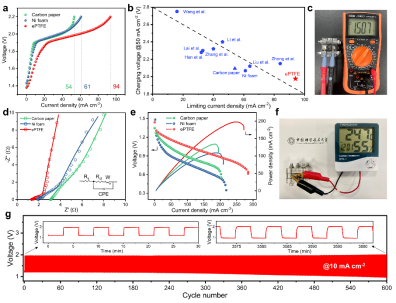
A team led by Prof. TAN Peng from the University of Science and Technology of China (USTC) introduced a “bubble diode” concept from fluid dynamics to address the bubble issues in fast-charging Zn-air batteries. The results were published in Energy Storage Materials under the title “Boosting gaseous oxygen transport in a Zn-air battery for high-rate charging by a bubble diode-inspired air electrode. inspired air electrode”.
The rechargeable Zn-air battery boasts high energy density, safety and environmental friendliness. However, fast charging of Zn-Air batteries confronts a serious problem of bubble precipitation. The bubbles generated by the oxygen precipitation reaction at the anode are attached to the electrode surface, leading to serious hazards such as blocked ion transport in the electrolyte.
Researchers also found that large bubbles require a higher contact angle difference to generate enough unbalanced surface tension on both sides to drive them across the electrode. Accordingly, a phase diagram of bubble behavior related to bubble and contact angle size was developed to guide the electrode design.
Through electrochemical mass spectrometry tests, researchers further revealed that under the action of “bubble diode”, the gas generated by oxygen precipitation reaction is discharged from the cell system in time, avoiding the adhesion of bubbles and carbon corrosion reaction under high charging oxidation state.
The results of Prof. TAN’s team point the way for future design on bubble-free electrodes, guiding the development of high-performance Zn-air batteries and other gas-evolved electrochemical systems.


